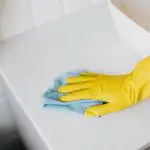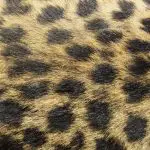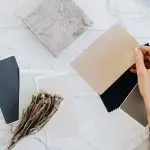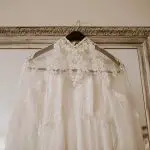Are Glue Dots the perfect fabric adhesive for your crafting projects?
Imagine effortlessly securing delicate lace onto a wedding dress or seamlessly attaching patches to a denim jacket.
With their mess-free, instant bond, Glue Dots offer a convenient solution for fabric adhesion.
In this exploration, we'll delve into the effectiveness of Glue Dots on various fabric types, compare them to traditional adhesives, and provide tips for optimal usage.
Whether you're a seasoned seamstress or a DIY enthusiast, mastering the art of fabric adhesion with Glue Dots could elevate your crafting endeavors.
Let's unravel the possibilities and considerations to determine if Glue Dots are the ideal choice for your fabric projects.
Key Takeaways
- Glue dots for fabric are mess-free, easy to use, and provide a strong bond.
- They come in various sizes for different fabric weights and textures, offering convenience and versatility.
- However, they may not be suitable for heavy-duty fabrics or frequent washing, and can leave a residue over time.
- When comparing glue dots to traditional fabric adhesives, bonding strength and application techniques differ, but glue dots offer a more straightforward and convenient application.
Pros and Cons of Glue Dots for Fabric
Glue dots offer convenience and versatility as fabric adhesives, but they also present limitations that should be considered.
Advantages:
- Glue dots are mess-free and easy to use. You simply press the dot onto the fabric, and you're done. No need to deal with messy liquid adhesives or hot glue guns.
- They provide a strong bond, making them suitable for a wide range of fabric projects.
- Glue dots come in various sizes, making them adaptable for different fabric weights and textures.
Limitations:
- While glue dots are strong, they may not be the best option for heavy-duty fabrics or items that will undergo frequent washing.
- Some users have found that glue dots can leave a residue on the fabric over time, which may not be ideal for certain projects.
It's essential to consider these limitations when deciding whether glue dots are the right fabric adhesive for your specific project.
Comparing Glue Dots to Traditional Fabric Adhesives
When considering fabric adhesives, it's important to weigh the benefits of glue dots against those of traditional options. They offer convenience and versatility as fabric adhesives, but they also present limitations that should be considered. Bonding strength is a crucial factor to consider when comparing glue dots to traditional fabric adhesives.
Traditional fabric adhesives like fabric glue or fusible webbing often provide a strong and durable bond, especially when used for heavier fabrics or items that will undergo frequent washing. On the other hand, the bonding strength of glue dots may vary depending on the specific type and brand, so it's essential to carefully choose the right glue dots for your fabric project.
Application techniques also differ between glue dots and traditional fabric adhesives. While traditional options may require ironing or careful spreading of adhesive, glue dots offer a more straightforward application. They can be easily applied by simply pressing the adhesive onto the fabric, making them a convenient choice for quick fabric repairs or crafting projects.
Tips for Using Glue Dots on Fabric
Here's a tip for using glue dots on fabric:
You can achieve a secure bond by applying firm pressure when pressing the adhesive onto the fabric.
When using glue dots for quilting or working with delicate fabrics, it's crucial to apply the adhesive with care.
Start by ensuring that the fabric is clean and dry, as any dirt or moisture can affect the bond.
Always test the glue dots on a small, inconspicuous area of the fabric first to ensure they won't leave a mark or damage the material.
When applying the glue dots, gently press them onto the fabric, avoiding excessive rubbing or movement that could cause the fabric to stretch or distort.
Additionally, consider using a pressing cloth or parchment paper to protect the fabric when applying heat to set the adhesive. This is especially important when working with delicate or heat-sensitive fabrics.
Types of Fabric Projects Suitable for Glue Dots
When working with delicate fabrics, you can utilize glue dots for a variety of fabric projects to achieve a strong and secure bond without causing damage to the material. Glue dots offer versatility and convenience, making them suitable for various fabric crafts and clothing repairs. Here are some types of fabric projects that are particularly suitable for glue dots:
| Fabric Projects | Description | Benefits |
|---|---|---|
| Fabric Scrapbooking | Attaching fabric to paper for scrapbooking projects | No mess, easy application |
| Hemming | Securing hems in place | Quick and no sewing required |
| Appliqué | Applying decorative fabric shapes onto garments | Precise placement, no sewing necessary |
| Patchwork Quilting | Assembling fabric pieces for quilting projects | Strong bond, no need for sewing |
Whether you're creating fabric crafts or need a quick clothing repair, glue dots offer a convenient and reliable solution. Their versatility and ease of use make them a valuable tool for anyone working with fabric.
Testing the Durability of Glue Dots on Fabric
To test the durability of glue dots on fabric, you can conduct a series of rigorous stress tests to assess their adhesive strength and longevity. One effective method is to subject the fabric bonded with glue dots to repetitive pulling and stretching. This simulates the wear and tear that fabric adhesive may experience over time. By observing how well the glue dots withstand this stress, you can gauge their ability to maintain fabric bonding under normal usage conditions.
Another crucial aspect to consider is the impact of environmental factors on adhesive strength. Testing the fabric bonded with glue dots under varying conditions of temperature and humidity can provide valuable insights into their resilience. Evaluating the adhesive strength of glue dots on different types of fabric, such as cotton, polyester, or silk, will also contribute to a comprehensive assessment of their durability.
Furthermore, analyzing the longevity of fabric bonding with glue dots by measuring the retention of adhesive strength over an extended period is essential. This can be achieved by conducting accelerated aging tests to simulate the effects of long-term usage on the adhesive properties.
Alternative Fabric Adhesive Options to Consider
Considering the durability and adhesive strength of glue dots on fabric, you may want to explore alternative fabric adhesive options for your projects. Here are some alternative options to consider:
- Fabric Glue:
- Ideal for delicate fabrics and embellishments.
- Provides a strong, flexible bond that dries clear, making it suitable for a wide range of fabric projects.
- Can be used for both temporary and permanent bonding, offering versatility for various crafting needs.
- Spray Adhesive:
- Offers a quick and even application, making it perfect for larger fabric surfaces or intricate designs.
- Provides a temporary bond that allows for repositioning before creating a permanent hold.
- Suitable for a variety of fabrics, including cotton, denim, and polyester, making it a versatile choice for different projects.
Exploring these alternative fabric adhesive options can help you find the best solution for your specific project needs. Whether you require a permanent hold for heavy-duty fabrics or a temporary bond for intricate designs, these alternatives offer a range of adhesive properties to suit your crafting requirements.
Frequently Asked Questions
Can Glue Dots Be Used to Adhere Fabric to Non-Fabric Surfaces, Such as Metal or Plastic?
When adhering fabric to non-fabric surfaces like metal or plastic, glue dots can provide strong fabric adhesion. They are durable and suitable for various materials, making them a versatile choice for your crafting needs.
Are Glue Dots Reusable on Fabric, or Are They a One-Time Use Adhesive?
Yes, glue dots are reusable on fabric. However, for a more permanent solution, consider alternative adhesives like fabric glue or heat-activated adhesives. These options offer a stronger bond and are specifically designed for fabric applications.
How Do Glue Dots Hold up in High Heat or Extreme Cold Conditions When Used on Fabric?
In high heat or extreme cold, glue dots are effective on various fabric types. They offer durability in extreme conditions and are versatile for different fabrics. They hold up well, making them a reliable fabric adhesive.
Can Glue Dots Be Easily Removed From Fabric Without Causing Damage or Leaving Residue?
Removing glue dots from fabric is easy and damage-free when done correctly. Gently peel off the dot, then use a residue-free adhesive remover for any remaining residue. This ensures your fabric stays pristine.
Are There Any Special Considerations or Tips for Using Glue Dots on Delicate Fabrics Like Silk or Lace?
When using glue dots on delicate fabrics like silk or lace, consider these tips: lightly press the dot to avoid damaging the fabric, test on a small area first, and avoid using on non-fabric surfaces.






